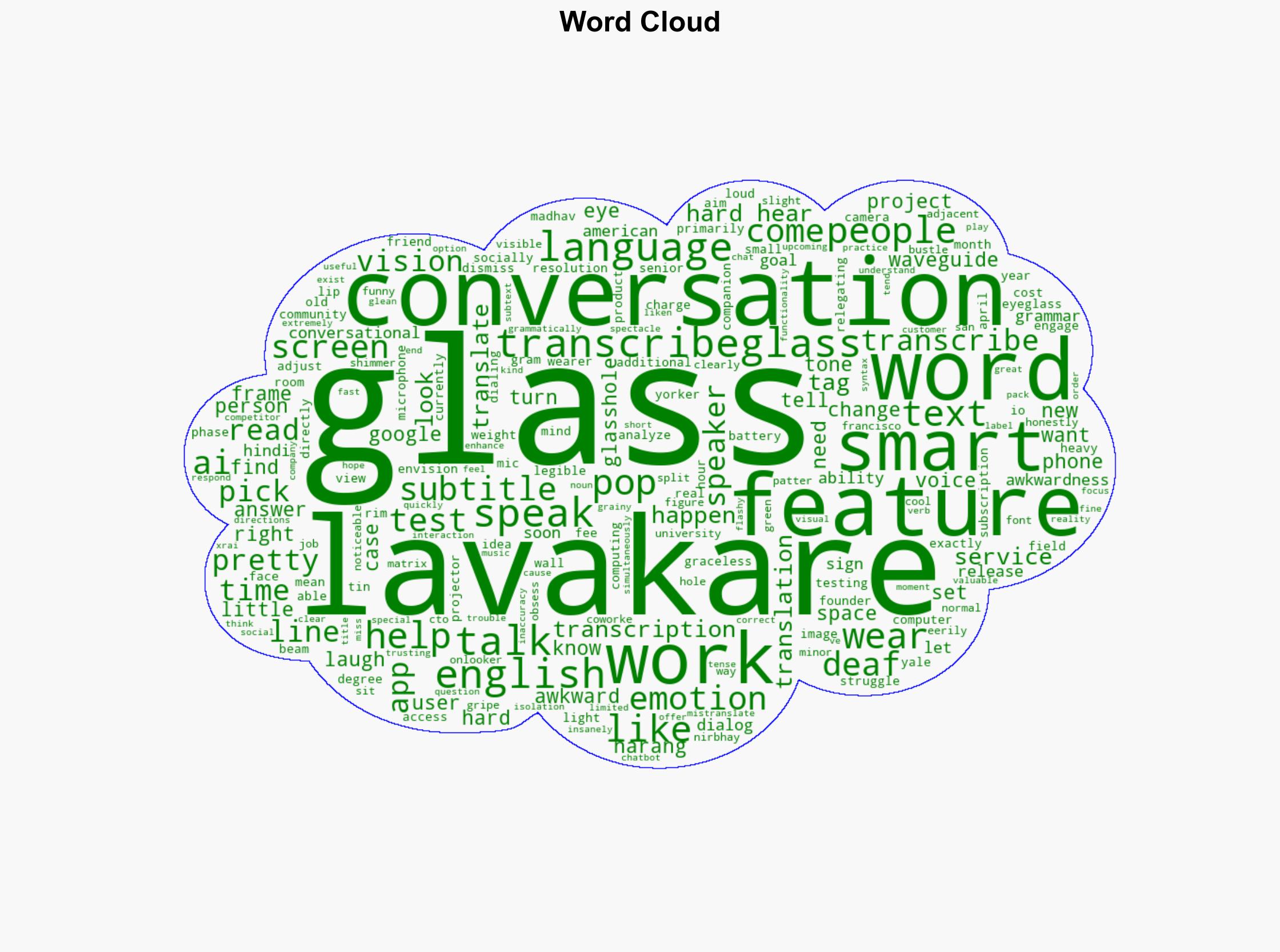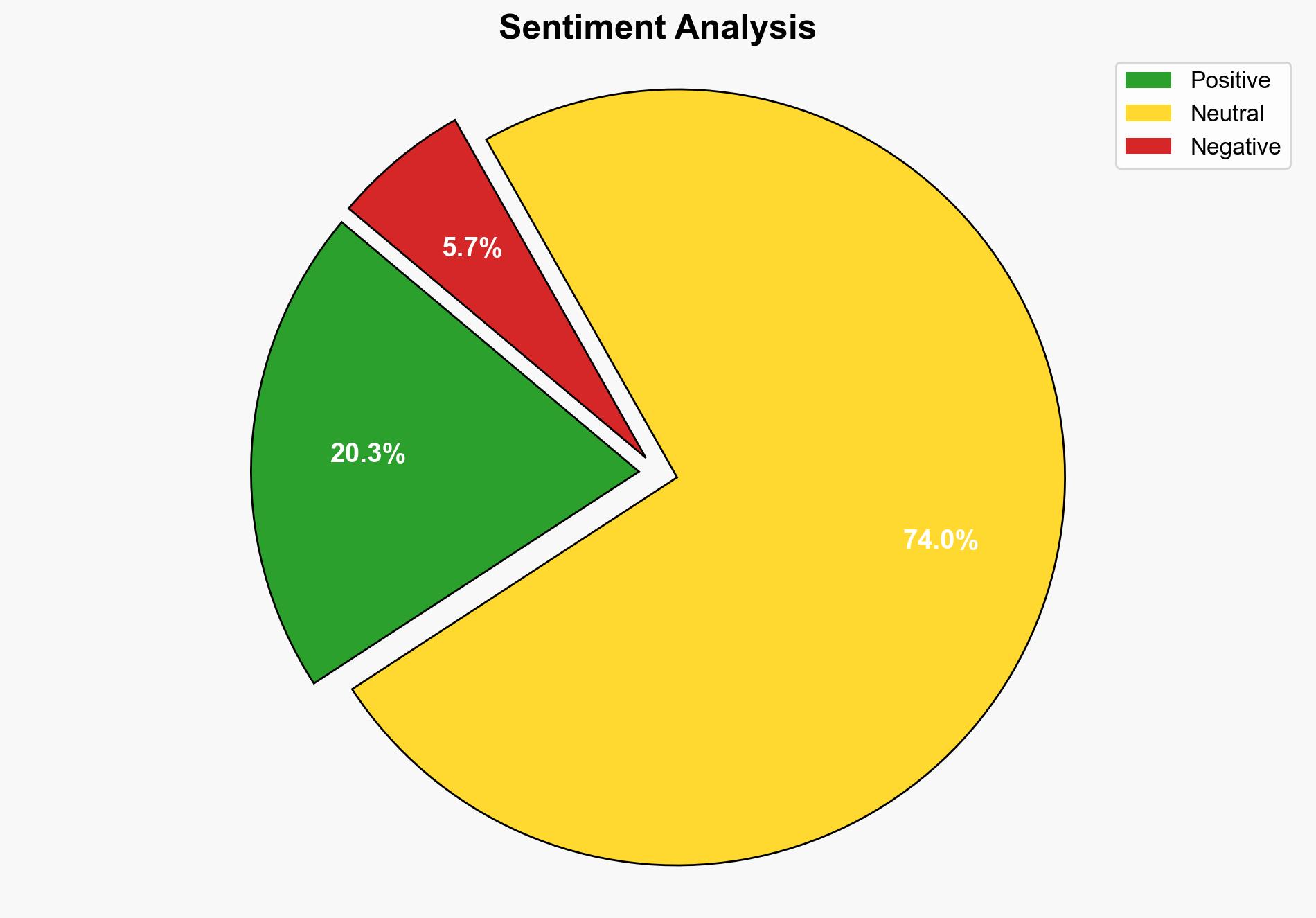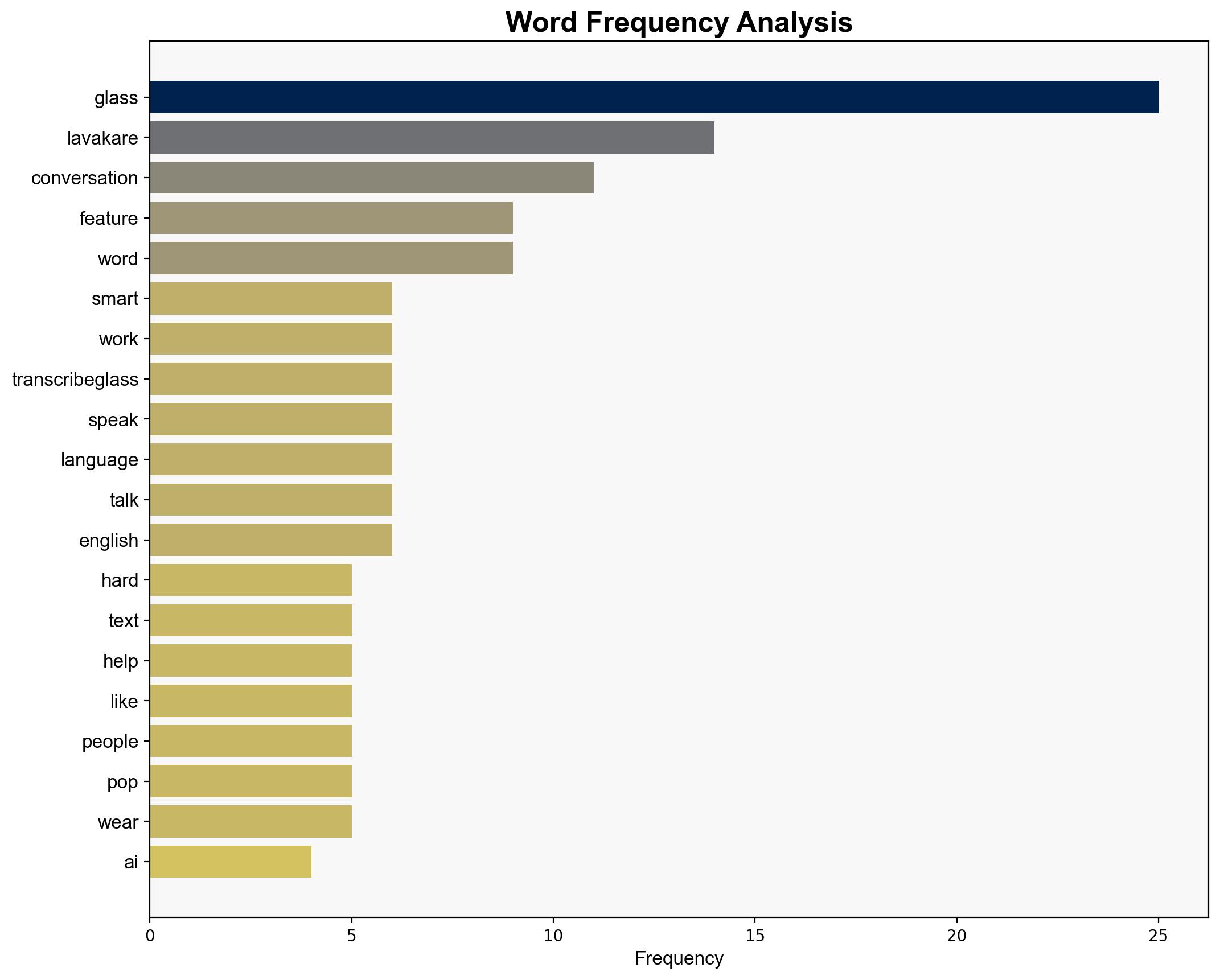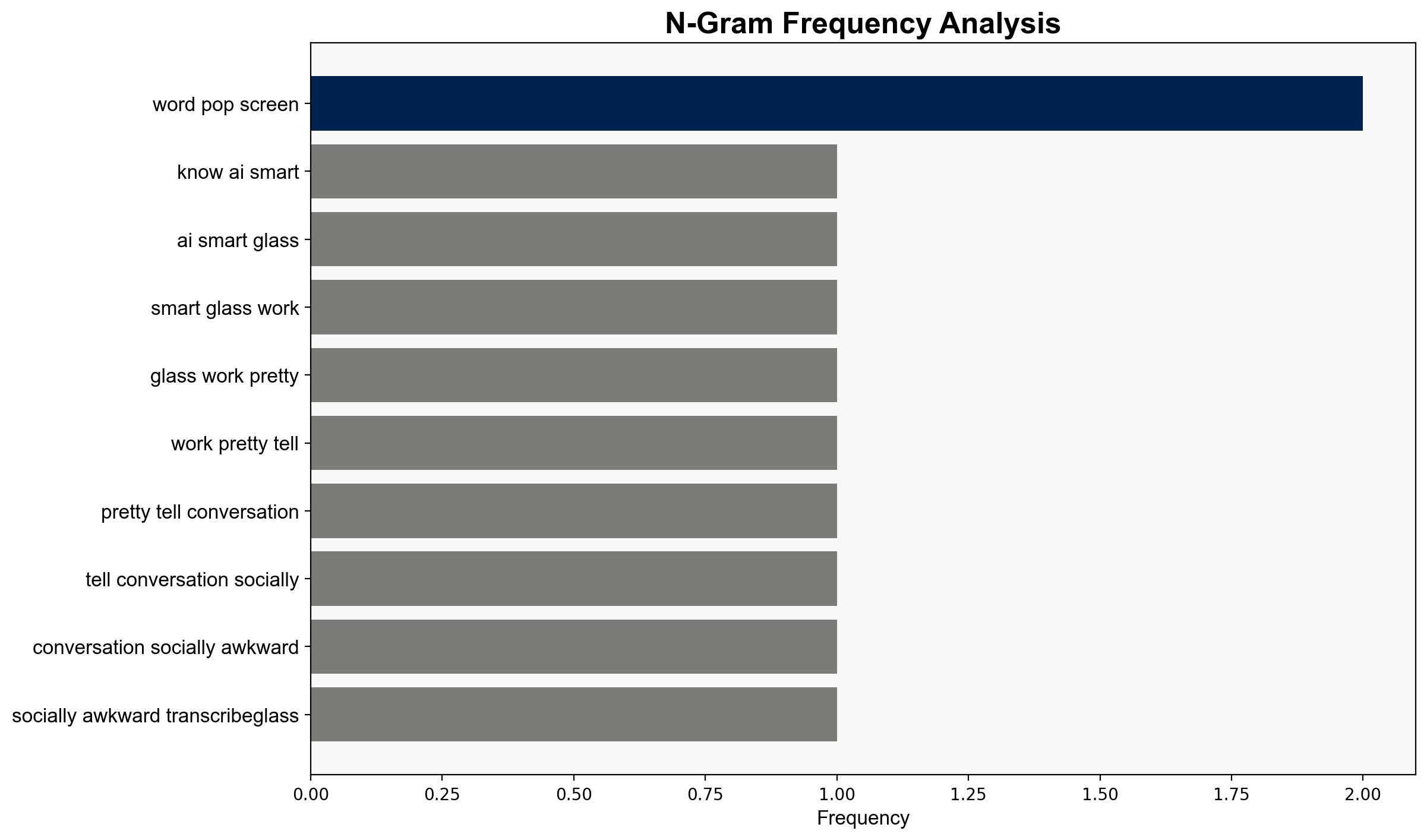These Transcribing Eyeglasses Put Subtitles on the World – Wired
Published on: 2025-07-02
Intelligence Report: These Transcribing Eyeglasses Put Subtitles on the World – Wired
1. BLUF (Bottom Line Up Front)
The introduction of TranscribeGlass, a smart eyeglass technology, presents a significant advancement in assistive devices for the deaf and hard-of-hearing community. This technology transcribes spoken conversations in real-time, projecting subtitles directly onto the user’s field of vision. While promising, the technology is still in the testing phase, with potential for broader applications such as language translation and tone analysis. Strategic recommendations include monitoring the development and deployment of this technology for potential cybersecurity vulnerabilities and ensuring accessibility and affordability for target users.
2. Detailed Analysis
The following structured analytic techniques have been applied to ensure methodological consistency:
Adversarial Threat Simulation
Potential cyber threats include unauthorized access to user data and interception of real-time transcriptions. Simulation of adversarial actions can help identify and mitigate these vulnerabilities.
Indicators Development
Monitoring the integration of AI and IoT components within the eyeglasses can help detect anomalies that may indicate security breaches or system failures.
Bayesian Scenario Modeling
Probabilistic models can predict potential pathways for cyberattacks, focusing on data transmission and storage vulnerabilities inherent in the device’s operation.
3. Implications and Strategic Risks
The deployment of TranscribeGlass could influence social dynamics by enhancing communication for the hearing impaired. However, it also poses risks such as privacy concerns and potential misuse of real-time transcription capabilities. The technology’s reliance on AI and connectivity introduces systemic vulnerabilities that could be exploited by cyber adversaries, impacting user privacy and data integrity.
4. Recommendations and Outlook
- Enhance cybersecurity measures to protect user data and ensure secure communication channels.
- Develop regulatory frameworks to address privacy concerns and establish guidelines for ethical use.
- Scenario-based projections:
- Best case: Widespread adoption improves accessibility and social inclusion for the hearing impaired.
- Worst case: Security breaches lead to loss of sensitive data and erosion of user trust.
- Most likely: Gradual adoption with ongoing improvements in security and functionality.
5. Key Individuals and Entities
Madhav Lavakare, Nirbhay Narang
6. Thematic Tags
assistive technology, cybersecurity, AI integration, privacy concerns, accessibility





